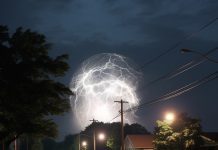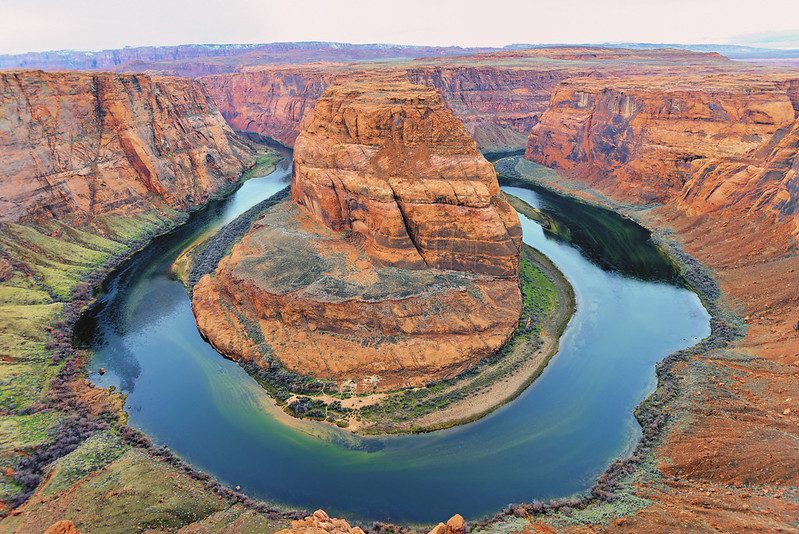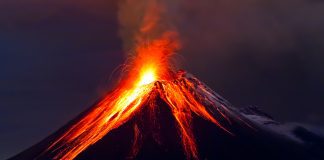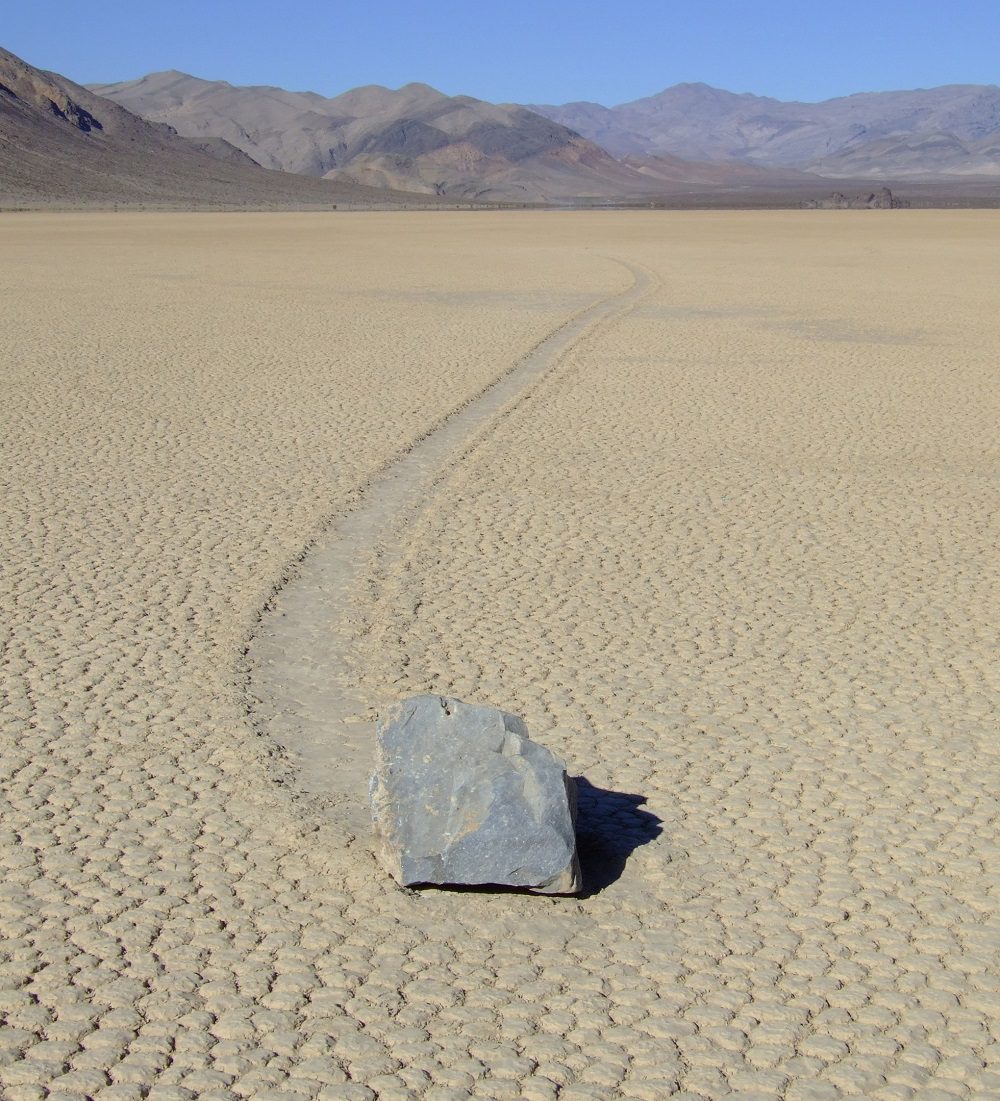
The enigmatic phenomenon of sailing stones has captivated nature lovers and scientists alike for over a century. These seemingly ordinary rocks, found primarily in Death Valley’s Racetrack Playa, have the uncanny ability to move across the desert floor, leaving intricate trails behind them.
Over time, various theories have been proposed to explain this mysterious movement – from light winds and slippery mud surfaces to more complex interactions between water, ice, and wind. In this blog post, we will delve into the composition and origin of these fascinating sailing stones while examining their unique tracks left on the Playa surface.
We’ll also explore some groundbreaking research efforts that have helped unravel this geological mystery. From Ralph Lorenz’s Tupperware experiment to recent time-lapse photography studies capturing stone movement in action – each investigation has brought us closer to understanding how these natural wonders come alive under specific conditions.
Lastly, we’ll discuss ongoing research endeavors focused on uncovering even more about the sailing stones phenomenon and its potential links with climate change. And for those eager to witness this marvel first-hand at Death Valley National Park’s Racetrack Playa, we’ve got you covered with essential tips for an unforgettable visit.
The Mysterious Sailing Stones of Death Valley
Located at Racetrack Playa in California’s Death Valley National Park, the sailing stones have long been a source of fascination for nature lovers and scientists alike. These rocks, composed of dolomite and syenite, seem to defy gravity as they move across the flat desert landscape without any apparent cause.
Composition and Origin of the Sailing Stones
The enigmatic sailing stones are primarily made up of two types: dark-colored dolomite weighing around 25 pounds on average and lighter-colored syenite, which can weigh over 600 pounds. Despite their significant weight differences, both types exhibit an uncanny ability to glide effortlessly across Racetrack Playa.
Tracks Left Behind by Their Movement
- Mysterious Trails: The movement leaves behind trails that can stretch hundreds of feet long, with some even reaching lengths up to 820 feet.
- Evidence Over Time: These trails provide evidence that movement does occur approximately once every two or three years.
- A Natural Wonder: The tracks left behind by these seemingly self-propelled rocks make them one of Earth’s most intriguing natural phenomena.
Intrigued? You’re not alone. For decades now, researchers have tried tirelessly to solve this perplexing puzzle – how do these massive boulders manage to move so gracefully without any visible force propelling them forward? Stay tuned as we delve deeper into possible explanations for this captivating phenomenon.
The mysterious sailing stones of Death Valley are a phenomenon that has been studied for many years and still remains largely unexplained. It’s time to probe the potential sources of these stones’ activity, conjectured by various researchers in the past.
Investigating Possible Causes for Stone Movement
For decades, researchers have tried to solve the puzzle of how these sailing stones move across Racetrack Playa without any visible force propelling them forward. Trails measuring up to 820 feet provide evidence that movement does occur approximately once every two or three years.
Ralph Lorenz’s Tupperware Experiment
In an attempt to understand this baffling phenomenon, planetary scientist Ralph Lorenz conducted a unique experiment using Tupperware containers filled with water and rocks. He discovered that when the water froze around the rocks and was then exposed to wind, it caused the ice-encased stones to slide along surfaces similar in texture to those found on Racetrack Playa. This finding led him to propose that ice might play a significant role in moving Death Valley’s sailing stones.
Other Theories Considered Over Time
- Magnetic Forces: Some early theories suggested magnetic forces could be responsible for stone movement; however, there is no evidence supporting this idea since both dolomite and syenite are non-magnetic minerals.
- Tremors: Another theory posited that seismic activity might cause vibrations strong enough to propel these heavy rocks across flat terrain; yet again, research has not provided substantial proof backing such claims.
- Hurricane-force Winds: Although high winds can contribute significantly towards moving objects over vast distances at great speeds (as seen during hurricanes), scientists ruled out this possibility due largely because average wind speeds recorded within Death Valley fall far short of hurricane-level intensity required for such feats.
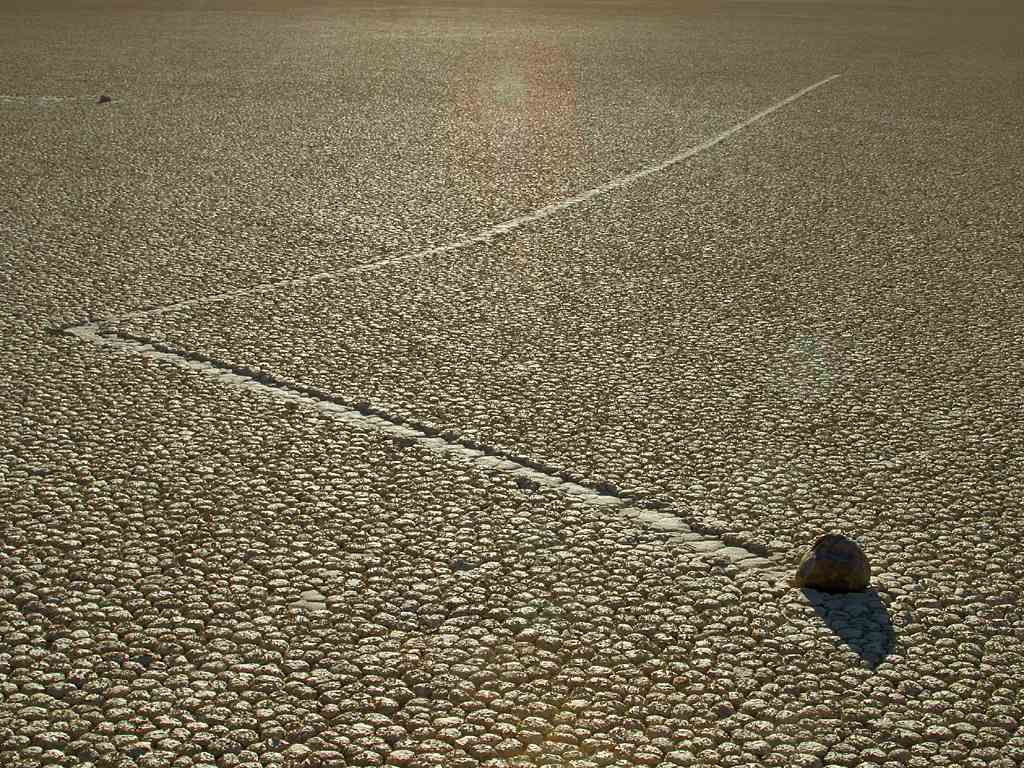
The quest continued until time-lapse photography provided some much-needed answers, as we will explore in the next section.
After examining the various theories, it is still uncertain what causes sailing stones to move. Time-lapse photography provides a unique opportunity to further investigate this phenomenon by capturing stone movement in action.
Time-Lapse Photography Sheds Light on Stone Movement
In a thrilling turn of events, cousins Richard Norris and James Norris decided to employ the use of time-lapse photography in an attempt to unravel the enigma surrounding Death Valley’s sailing stones.
Their groundbreaking research not only captured images showing actual instances where individual pieces traveled distances reaching speeds up to 15 feet per minute but also provided additional insight into potential factors responsible for their mysterious propulsion system – wind and ice.
Capturing Stone Movement Through Photographs
The intrepid duo set up cameras around Racetrack Playa, meticulously documenting every shift in position these elusive rocks made over time. The resulting footage was nothing short of astonishing. For the first time ever, we could witness these seemingly immovable objects glide effortlessly across the desert floor like dancers performing a choreographed routine.
Wind and Ice as Key Factors in Stone Propulsion
Their study revealed that during winter months, when temperatures drop below freezing at night, thin sheets of ice form on top of standing water puddles left by occasional rainstorms. As the morning sun warms this icy surface layer, it begins breaking apart into large panels, which are then propelled forward by strong gusts blowing across Racetrack Playa – effectively pushing any rocks caught within their path along for a ride.
- Rainwater: Forms shallow pools on Racetrack Playa during wet seasons.
- Icy Surface Layer: Freezing nighttime temperatures create thin layers atop standing water puddles.
- Morning Sun: Warms icy surfaces causing them to break apart into large panels.
- Wind: Gusts propel ice sheets forward, pushing rocks along with them.
This groundbreaking research has provided us with a much clearer understanding of the complex interplay between wind and ice that drives these remarkable sailing stones across Death Valley’s Racetrack Playa – an extraordinary spectacle to behold.
Time-lapse imaging has afforded us a peek into the enigmatic drifting of sailing stones, believed to be powered by water, ice, and wind in unison. The next heading delves deeper into this phenomenon to explore how these elements interact with each other in order to propel the stones across vast distances.
Key Takeaway:
Cousins Richard and James Norris used time-lapse photography to capture the movement of Death Valley’s sailing stones, revealing wind and ice as key factors in their propulsion. The study showed that during winter months, thin sheets of ice form on standing water puddles which are then propelled forward by strong gusts blowing across Racetrack Playa, pushing rocks along with them.
The Most Plausible Explanation: Water, Ice, and Wind Interaction
After years of tireless investigation into the enigmatic movement of Death Valley’s sailing stones, a breakthrough was finally achieved. Researchers discovered that the mysterious propulsion system behind these geological wonders is none other than a delicate interplay between water, ice, and wind.
How Water Accumulation Affects Stone Movement
Rainwater occasionally accumulates on Racetrack Playa, forming shallow ponds. These pools provide an essential ingredient for stone movement: liquid water. When temperatures drop during cold desert nights or winter months, this thin layer of water freezes into sheets of ice.
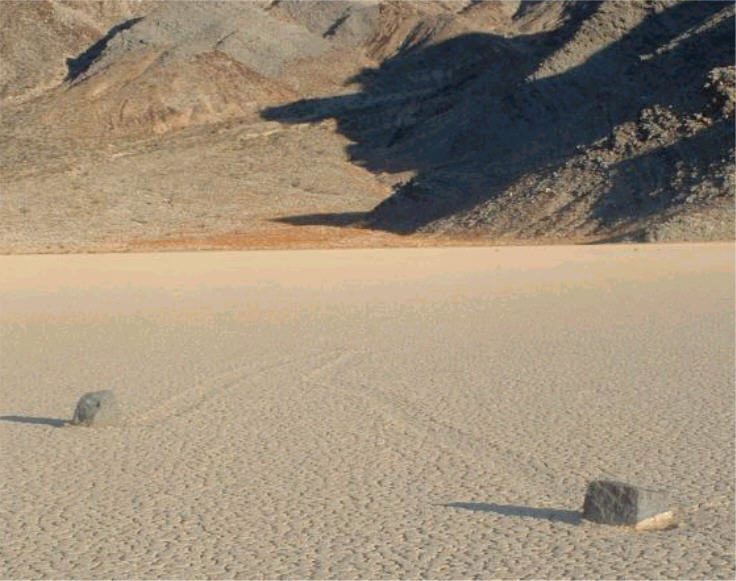
Temperature Fluctuations Playing a Role
Surprisingly, not only the icy chill of plummeting temperatures responsible for this occurrence; the subsequent thawing process also has a part to play. As daytime temperatures rise in Death Valley National Park’s arid climate, ice sheets break apart into large panels. These floating fragments then act as natural bulldozers, pushing rocks along with them across the Playa surface.
- Rainwater: Provides the liquid needed for stone movement.
- Ice formation: Occurs when accumulated rainwater freezes overnight or during colder seasons.
- Floating ice panels: Push rocks along as they move due to temperature fluctuations.
This incredible discovery has shed light on one of nature’s most captivating mysteries. The interaction between wind and melting ice creates enough force to propel these seemingly immovable objects through vast expanses at speeds reaching up to an astonishing 15 feet per minute. The research conducted by Richard Norris and James Norris has provided the most plausible explanation for this fascinating natural occurrence.
It is a testament to the sheer power of nature’s elements that something as seemingly simple as water, ice, and wind can come together in such an extraordinary way, causing these massive stones to sail across Death Valley’s arid landscape.
The water, ice, and wind interaction are the most likely explanation for the sailing stones phenomenon; further research is needed to better understand how climate change may be affecting stone movement. Continuing our investigation into this fascinating subject, we now turn our attention to ongoing studies on the sailing stones and their impact on nature.
Key Takeaway:
Death Valley’s sailing stones have finally been explained after years of investigation. The movement is caused by an interplay between water, ice, and wind; rainwater provides the liquid needed for stone movement, which then freezes overnight or during colder seasons into sheets of ice that push rocks along as they move due to temperature fluctuations.
Continued Research Efforts on Sailing Stones Phenomenon
The enigmatic sailing stones of Death Valley continue to captivate scientists and nature lovers alike. Despite recent breakthroughs in understanding the role of water, ice, and wind interaction in their movement, there remains an air of intrigue surrounding these geological wonders. Researchers are tirelessly working towards uncovering new information about their origins and possible future developments.
Ongoing Studies on the Sailing Stones
Despite the many unknowns, researchers are determined to gain more insight into this phenomenon through further study. As a result, they are conducting ongoing studies to gain further insight into how these rocks move across Racetrack Playa’s flat surface without any apparent force propelling them forward. Through continuous observation and data collection, researchers hope to better understand what causes variations in stone movement patterns over time.
The Impact of Climate Change on the Stone Movement
A crucial aspect being investigated is the potential impact that climate change may have on this natural wonder. With global temperatures steadily rising due to human activities, it is essential for scientists to determine if these changes will affect sailing stone behavior or even threaten their existence altogether.

For instance, increased evaporation rates could lead to the less frequent formation of shallow ponds required for rock propulsion by ice panels – ultimately resulting in diminished or halted stone movements entirely. By studying climate change’s effects on Death Valley’s ecosystem, experts aim to predict future scenarios concerning this captivating spectacle.
- Increased evaporation rates: Less frequent formation of shallow ponds
- Rising temperatures: Potential changes in ice panel dynamics
- Altered precipitation patterns: Unpredictable effects on stone movement frequency and distance
In the face of these challenges, it is crucial for scientists to continue their research efforts to protect and preserve this unique geological phenomenon for future generations.
Continued research efforts on the sailing stones phenomenon are vital to understanding this mysterious natural occurrence. Visiting Death Valley National Park’s Racetrack Playa is a great way to observe and appreciate these geological wonders in person.
Key Takeaway:
Scientists are conducting ongoing studies to understand the sailing stones phenomenon in Death Valley, including how they move without any apparent force. They are also investigating the potential impact of climate change on stone movements, such as increased evaporation rates leading to the less frequent formation of shallow ponds required for rock propulsion by ice panels and altered precipitation patterns resulting in unpredictable effects on stone movement frequency and distance. It is crucial for scientists to continue their research efforts to protect and preserve this unique geological wonder.
Visiting Death Valley National Park’s Racetrack Playa
Embark on an unforgettable adventure to witness the enigmatic Racetrack Playa in Death Valley National Park, where you can marvel at the moving rocks while scientists work towards understanding this fascinating phenomenon. This incredible example showcases Earth’s diverse beauty found within our nation’s park systems – making it a worthwhile endeavor for nature lovers.
What to Expect When Visiting Racetrack Playa
Racetrack Playa is a remote and rugged location that requires careful planning before embarking on your journey. The playa itself is a vast expanse of the flat desert landscape with scattered sailing stones leaving their mysterious tracks behind. Be prepared for limited facilities, no cell phone reception, and potentially challenging road conditions when visiting this captivating destination.
- Park Access: A high-clearance vehicle with sturdy tires is recommended due to the rough terrain and sharp rocks along the way.
- Camping: There are two primitive campgrounds nearby: Homestake Dry Camp and Teakettle Junction Campground; however, they offer no amenities or water sources.
- Hiking: Although there are no designated trails around Racetrack Playa, visitors can explore the area freely but should practice Leave No Trace principles to preserve its pristine condition.
Tips for Enjoying Your Visit
To make your visit even more memorable and enjoyable, consider these helpful tips:
- Prioritize Safety: Bring plenty of water (at least one gallon per person per day), wear appropriate clothing and footwear, and be prepared for sudden weather changes.
- Respect the Environment: Do not touch or move the sailing stones, as it can disrupt ongoing research efforts. Keep a safe distance from wildlife and do not feed them.
- Timing is Key: Plan your visit during cooler months (October to April) to avoid extreme heat while exploring Racetrack Playa.
Dare to venture into Death Valley National Park’s Racetrack Playa and immerse yourself in one of nature’s most intriguing mysteries – an experience you will cherish forever.
Key Takeaway:
Embark on an unforgettable adventure to witness the enigmatic Racetrack Playa in Death Valley National Park, where you can marvel at the moving rocks while scientists work towards understanding this fascinating phenomenon. However, visitors should be prepared for limited facilities and potentially challenging road conditions when visiting this captivating destination. To make your visit even more memorable and enjoyable, prioritize safety, respect the environment, and plan your visit during cooler months (October to April).
FAQs Concerning Sailing Stones
What is the Science Behind Sailing Stones?
The science behind sailing stones involves a combination of water, ice, and wind. When rainwater accumulates in the desert basin and freezes overnight, thin sheets of ice form around the rocks. As temperatures rise during the day, these ice sheets break apart, and strong winds push them along with the embedded rocks across the surface.
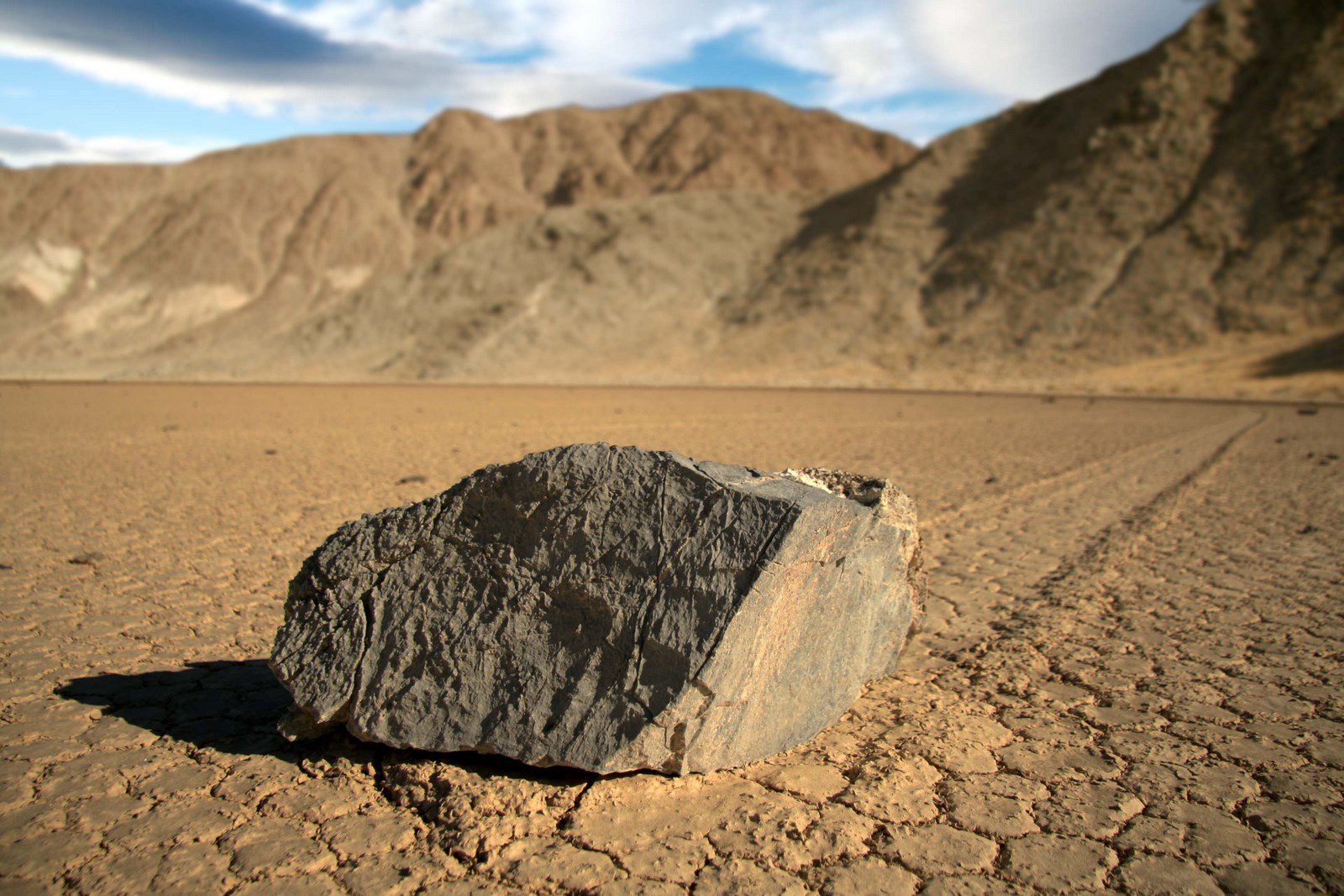
What Causes Sailing Stones to Move?
Sailing stones move due to a complex interplay between water accumulation in desert basins, freezing temperatures that create thin layers of ice around rocks, and strong gusts of wind which propel these icy formations (with rocks inside) across surfaces like Racetrack Playa in Death Valley National Park.
How Do Sailing Rocks Work?
Sailing rocks work through an intricate process involving natural elements such as water, temperature fluctuations causing freezing and thawing cycles, and wind forces. The interaction among these factors results in unique conditions that allow for seemingly unassisted movement of heavy boulders over flat terrain leaving distinct tracks on their path.
Conclusion
Exploring the mystery of Sailing Stones at Death Valley’s Racetrack Playa has been a fascinating journey. From their composition and origin to investigating possible causes for stone movement, we’ve learned that light winds, ice, water accumulation, and temperature fluctuations all play a role in this phenomenon.
Thanks to ongoing research efforts and time-lapse photography shedding light on the movement of the sailing stones, we now have a better understanding of how these rocks move across the desert floor.
The phenomenon has been a topic of interest since the early 1900s, and it continues to captivate visitors to this day. Venturing to Death Valley National Park’s Racetrack Playa will be a remarkable and unique experience.






































